1. Contagious. Why Things Catch On — Jonah Berger
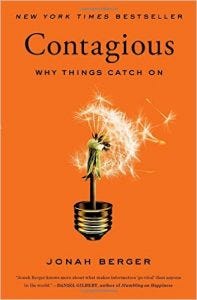
Rating: 8/10
Date of reading: 22nd — 26th of February, 2017
Description: There are six elements of virality: social value, triggers, emotions, public, practical values, and stories.
Impression: If you want your message heard, remembered, and be actioned-upon, then this is the right book for you. I know a couple of people who used this book to create viral articles which jump-started their career.
Quotes: Some people like to be the life of the party, but no one wants to be the death of it. We all want to be liked. The desire for social approval is a fundamental human motivation.
“Live the healthy way, eat five fruits and veggies a day.”
“Each and every dining-hall tray needs five fruits and veggies a day.”
Both slogans encouraged people to eat fruits and vegetables, but the corny “tray” slogan was 25% more effective. Even though people didn’t like the slogan (actually hated it), it was more effective!
Read our Book Summary on Contagious by Jonah Berger.
2. Your Move — Ramit Sethi

Rating: 7/10
Date of reading: 31st of July — 2nd of August, 2017
Description: One of Ramit Sethi’s finest books out there. The book teaches you how to separate good ideas like wheat from the chaff, how to validate and research your idea, and finally make a living out of it.
Impression: I’ve been following Ramit’s two websites “I Will Teach You How To Be Rich” and “Growth Lab” for a couple of years already and the insights in the book aren’t regurgitated stuff from blog posts. This book is worth reading even if you follow those websites extensively because Ramit made sure, as always, that his customers have the best possible experience.
Quotes: When you can connect and really solve their problems, the price is a mere triviality.
The more money you make, the more value you can create.
Actually listening is the critical differentiator between a successful business with happy customers… and everyone else.
3. Expert Secrets — Russel Brunson

Rating: 8/10
Date of reading: 15th — 21st of October, 2017
Description: How to pack up your knowledge, skills, and expertise in a format people will gladly buy from you. And this is coming from a guy who used to sell potato guns, only to build a 9+figure business.
Impression: This is the ultimate how-to books when it comes to learning how to package your ideas and sell them to an audience. Everything from mission statements to stacking webinars, writing content calendars to marketing plans, this book has it all and it’s a great resource to come back over and over again.
This matter how much personal development you achieve, there will be a point where you can no longer progress. The only way to continue to grow is by helping others become like you. Yes, true growth and fulfillment comes from your contribution to others. By teaching, I had to dissect what I was doing and learn WHY it worked.
A creator, such as an artist, musician, photographer, craftsperson, performer, animator, designer, videomaker, or author — in other words, anyone producing works of art — needs to acquire only 1,000 True Fans to make a living.
A True Fan is defined as someone who will purchase anything and everything you produce. They will drive 200 miles to see you sing. They will buy the super deluxe reissued hi-res box set of your stuff even though they have the low-res version. They have a Google Alert set for your name. They bookmark the eBay page where your out-of-print editions show up. They come to your openings. They have you sign their copies. They buy the t-shirt, and the mug, and the hat. They can’t wait till you issue your next work. They are true fans.
4. Way Of The Wolf — Jordan Belfort
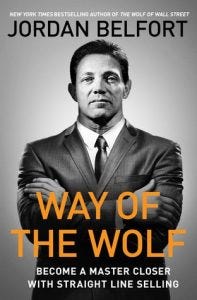
Rating: 7/10
Date of reading: 22nd — 29th of October, 2017
Description: How to sell in today’s world from the worlds most famous salesman. The Wolf of Wall Street teaches his Straight Line Selling system in the book and gives you everything you need to become a great (and ethical) salesperson.
Impression: This wasn’t just a sales book and it has everything to do with Jordan Belfort’s past. He emphasizes an ethical way of selling in the book (you must believe your product is really the best possible product for your customer at this moment) and moves away from any “black hat” strategies and tactics. Once you understand Cialdini’s Principles of Selling, take this book and go into nitty-gritty details of selling anything.
Quotes: Let me repeat that: the reason every sale is the same is because, despite all that individual stuff, the same three key elements still have to line up in any prospect’s mind before you have a shot at closing them.
You see, people don’t buy on logic; they buy on emotion, and then justify their decision with logic. The logical mind is analytical by nature, so the more information you give it the more information it wants to know. In consequence, if you get your prospect to a high level of logical certainty, they’ll say, “It sounds great, let me think about it . . .” or “Let me do a bit more research and I’ll call you back.”
However, if you skip making the logical case and focus strictly on creating emotional certainty, it won’t do the trick either, because the logical mind serves as a human bullshit detector.
In fact, in the vast majority of cases, you’re going to have to ask for the order at least two or three times before you have any chance of your prospect saying yes.
5. Story — Robert McKee

Rating: 8/10
Date of reading: 6th — 18th of January, 2018
Description: Storytelling principles. How to use them not only when writing a screenplay, but during everyday occurrences from talking to people to writing a blog post to mesmerizing a girl to give you her phone number. It works.
Impression: The elements of the story vary from author to author, but certain elements always stay the same. And there is no better person out there to teach you those storytelling elements than Robert McKee. And I tell you this even though I used to teach storytelling all around Europe.
Quotes: The writer shapes story around a perception of what’s worth living for, what’s worth dying for, what’s foolish to pursue, the meaning of justice, truth — the essential values.
Pure story talent is rare. What writer, on instinct alone, creates brilliantly told stories year after year and never gives a moment’s thought to how he does what he does or could do it better? Instinctive genius may produce a work of quality once, but perfection and prolificness do not flow from the spontaneous and untutored.
6. Made To Stick — Chip & Dan Heath
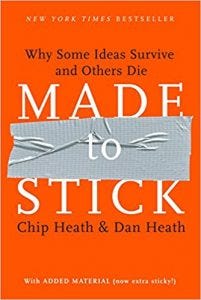
Rating: 8/10
Date of reading: 23rd of January — 2nd of February, 2018
Description: Six principles which make an idea “stick” in people’s minds. The principles are simple, unexpected, concrete, credible, emotional, and stories.
Impression: Made to Stick is a fun book, with lots of examples which prove the points extensively. The style of writing is easy to read and the authors make sure to present the research done in a simple manner that would entertain the reader. They literally used the six principles that make an idea stick to write their better. What better to “stick” your idea.
Quotes: The Great Wall of China is the only man-made object that is visible from space. (The Wall is really long but not very wide. Think about it: If the Wall were visible, then any interstate highway would also be visible, and maybe a few Wal-Mart superstores as well.)
That’s when the Curse of Knowledge kicks in, and we start to forget what it’s like not to know what we know.
7. Never Split The Difference — Chris Voss
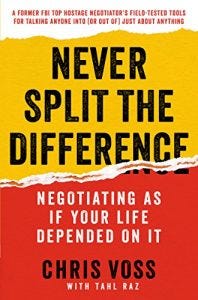
Rating: 10/10
Date of reading: 7th — 12th of February, 2018
Description: Drop the theory. Drop the 50%-50% deal. Chris Voss was an FBI negotiator dealing with kidnappings and ransoms. And you can’t do a 50%-50% deal when a human being is at stake. It needs to be 100%-0 and Chris shows us how in his amazing book Never Split The Difference.
Impression: This book is the reason why I can live from writing. Before I’ve read and started implementing the content of this book, I was poor and quite miserable as an artist. As soon as I started negotiating as “my life depended on it,” I suddenly realized what I was leaving at the table. This isn’t just about the money. It’s about friendship, about raising children, mentoring others, negotiating favors, and getting the best you can from life while still being ethic about it.
Quotes: In my short stay I realized that without a deep understanding of human psychology, without the acceptance that we are all crazy, irrational, impulsive, emotionally driven animals, all the raw intelligence and mathematical logic in the world is little help in the fraught, shifting interplay of two people negotiating.
Life is negotiation.
The majority of the interactions we have at work and at home are negotiations that boil down to the expression of a simple, animalistic urge: I want.
“I want you to free the hostages,” is a very relevant one to this book, of course.
But so is:
“I want you to accept that $1 million contract.”
“I want to pay $20,000 for that car.”
“I want you to give me a 10 percent raise.”
and
“I want you to go to sleep at 9 p.m.”
8. The Accidental Creative — Todd Henry
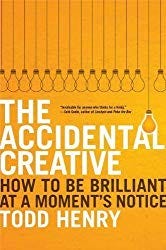
Rating: 7/10
Date of reading: 13th — 21st of February, 2018
Description: If there is one thing that creatives hate is when someone who is not creative tells us how we should be creative. Luckily, Todd Henry walks the talk (for over 20 years) and he knows what he’s talking about because of the results he and his company provided (and still provide). The concept in the book, when implemented, make you a professional creative instead of just an amateur who dabbles around.
Impression: Do you know how to distinguish between an amateur and a professional creative? “When inspiration stricks” can’t be found in the professional’s dictionary. Amateurs have the privilege of waiting for inspiration, professionals need to prolific, brilliant, and healthy to keep their work up. This book helped me to write and publish an article every single Tuesday for the past 130+ Tuesdays in a row, never missing a single one.
Quotes: Prolific + Brilliant — Healthy = Burnout
Brilliant + Healthy — Prolific = Unreliable
Healthy + Prolific — Brilliant = Fired
Prolific + Brilliant + Healthy = producing great work consistently and in a sustainable way
This suggestion that structure and creativity are two sides of the same coin is often an eyebrowraiser for my clients. There is the persistent myth that creativity results only from complete lack of boundaries and total freedom. The reality is that we are not capable of operating without boundaries. We need them in order to focus our creative energy into the right channels. Total freedom is false freedom. True freedom has healthy boundaries.
9. The Perennial Seller — Ryan Holiday
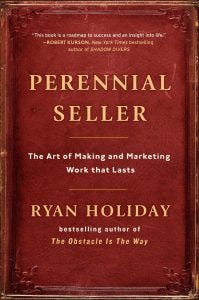
Rating: 8/10
Date of reading: 1st — 5th of March, 2018
Description: Smokey and the Bandit beat Star Wars in their opening weekend. Yet, nobody knows what Smokey and the Bandit is today and Star Wars is a multi-billion dollar franchize. Perennial Seller is all about playing it for the long game and not just for the opening weekend, whether it’s a book, movie, song or any other creative piece of work.
Impression: When a guy who sold more than half a million books in the last three years tells you how to be a perennial seller, you better listen. I love the work of Ryan Holiday and this book tells you more than just how to market something so that it keeps selling for decades. It tells you how to create the best possible product which has the potential of becoming a perennial seller. That’s why I’m still waiting to publish my first book. It’s still not the best possible piece it could be.
Quotes: Star Wars was beaten in its opening weekend in cinema by Smokey and the Bandit — $2.7 million to $2.5 million. What is Smokey and the Bandit? Nobody knowns.
People [who are] thinking about things other than making the best product never make the best product.
10. Hooked: How To Build Habit-Forming Products — Nir Eyal

Rating: 6/10
Date of reading: 1st — 4th of July, 2018
Description: How does a habit loop looks like (trigger, action, variable reward, investment) and how you can use it in life, business, products, and services. This book falls into the Habit Trifecta (Charles Duhhig The Power of Habit, B.J. Fogg Tiny Habits).
Impression: Since I started reading about habits (syntopically), I wanted to fill in all the blanks I had about it. That meant reading the biggest influencers when it comes to habits and Nir Eyal is definitely one of them. If you are a business owner with a B2C product, this is a must-read book for you.
Quotes: This layout prevented typists from jamming the metal type bars of early machines. This physical limitation is an anachronism in the digital age, yet QWERTY keyboards remain the standard despite the invention of far better layouts. Professor August Dvorak’s keyboard design, for example, placed vowels in the center row, increasing typing speed and accuracy. Though patented in 1932, the Dvorak Simplified Keyboard was written off. QWERTY survives due to the high costs of changing user behavior.
These common needs are timeless and universal. Yet talking to users to reveal these wants will likely prove ineffective because they themselves don’t know which emotions motivate them. People just don’t think in these terms. You’ll often find that people’s declared preferences — what they say they want — are far different from their revealed preferences — what they actually do.
11. Faking It: How To Seem Like A Better Person Without Actually Improving — College Humor
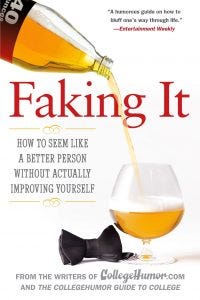
Rating: 6/10
Date of reading: 23rd — 31st of October, 2018
Description: How to appear like a better person without actually improving. This is the lazy person’s guide to success, happiness, and sex in life. You do actually learn things from this book and it’s a worthy read, at least for the fun of it. Read this if you need something easy to read, but hate those popular crime novellas.
Impression: I could bet $100 that most people who write book notes and summaries have actually never read that book. That’s why I showed you the behind-the-scenes process of reading books. But most people just take this “faking it” approach and once you do read some of those summaries (and this book), you learn that most of it is bullshit. So this book isn’t only good to learn how to bullshit, but also to learn how to recognize a bullshiter. As the saying goes “You can’t bullshit a bullshiter.”
Quotes: You can’t possibly be Master of All Domains, but you can certainly seem like you are. The easiest technique to achieve this effect is to be dismissive of the topic at hand. The trick here is to keep it fairly vague while using words that don’t really mean anything.
Benjamin Franklin once said a lie spoken confidently rings truer than a fact spoken meekly. We just made that quote up, but if you said it firmly while leaning forward and never losing eye contact, people would believe you because you appeared articulate and poised.
12. Trust Me, I’m Lying — Ryan Holiday

Rating: 7/10
Date of reading: 6th — 10th of November, 2018
Description: What happens when you start feeding the media monster and it becomes so big that, at a certain moment, it turns against you? The book talks about the ease with which the media report on something just to be first to report about it, with the truth being irrelevant in that whatsoever. And when this monster becomes enormous, innocent and not so innocent people get hurt.
Impression: People have lost their careers, reputations, and lives on the basis of…nothing. Literally nothing. Someone makes up a rumor because they want to target you and then, they spread that rumor like wildfire. The truth doesn’t matter, all that matters is speed and eye rolls (clicks). A truly horrifying system which can devour you every single day and you have no control over it.
Quotes: It’s why I found myself at 2:00 A.M. one morning, at a deserted intersection in Los Angeles, dressed in all black. In my hand I had tape and some obscene stickers made at Kinko’s earlier in the afternoon. What was I doing here? I was there to deface billboards, specifically billboards I had designed and paid for. Not that I’d expected to do anything like this, but there I was, doing it. My girlfriend, coaxed into being my accomplice, was behind the wheel of the getaway car.
Once you get a story like this started it takes on a life of its own. That’s what happened after I vandalized Tucker’s billboards. Exactly one week later, inspired by my example, sixteen feminists gathered in New York City late at night to vandalize I Hope They Serve Beer in Hell posters all over Manhattan. Their campaign got even more coverage than my stunt, including a 650-word, three-picture story on a Village Voice blog with dozens of comments (I posted some comments under fake names to get people riled up, but looking at them now I can’t tell which ones are fake and which are real). From the fake came real action.
13. The Power Of Moments — Chip & Dan Heath
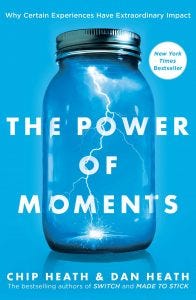
Rating: 7/10
Date of reading: 9th — 14th of December, 2018
Description: How to create moments which are magical for us. You know, the moments you remember for the rest of your life. Your wedding day, the birth of your first child, the graduation day. The Heath brothers found the formula behind those big moments and they showed us how to recreate them in our lives. The four elements to creating powerful moments are Elevation, Insight, Pride, and Connection.
Impression: This book is such a positive and easy read that it was the perfect book to end 2018 with a smile on my face. The positive examples in The Power of Moments restore hope in humanity, give you a way forward and explain how you can make not only your life’s moments be remembered, but also how to create events for other people so that they have their big moments which they remember until the day they leave Earth.
Quotes: Defining moments shape our lives, but we don’t have to wait for them to happen. We can be the authors of them. What if a teacher could design a lesson that students were still reflecting on years later? What if a manager knew exactly how to turn an employee’s moment of failure into a moment of growth? What if you had a better sense of how to create lasting memories for your kids?
In other words, New Year’s resolutions are not really about the resolutions. After all, for most people, the resolutions haven’t changed. Most people wanted to lose weight and save money on December 31, too. What we’re doing on New Year’s Day is more like a mental accounting trick. Our past failures are left on the ledger of Old Me. New Me starts today. New Year’s resolutions should really be called New Year’s absolutions.
